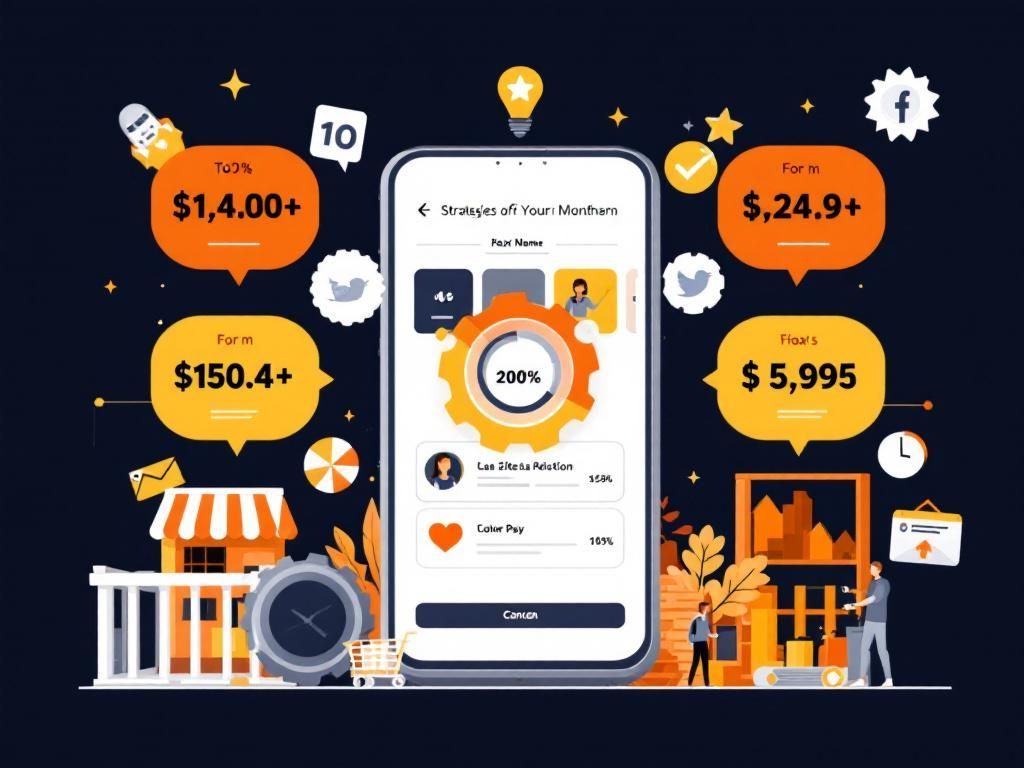Best Cross-Platform Mobile App Solutions for 2025
Discover the top cross-platform mobile app solutions for 2025 that enhance performance and user experience, ensuring your app stands out.

Table of Contents
Top Cross-Platform Mobile App Solutions for 2025
As we step into 2025, the demand for cross-platform mobile applications continues to rise, driven by the need for businesses to reach a broader audience using various operating systems. Cross-platform development enables developers to write code once and deploy it on multiple platforms, significantly reducing development time and cost. In this article, we will explore the top cross-platform mobile app solutions that are set to shape the future of mobile application development in 2025.
Understanding Cross-Platform Development
Cross-platform development refers to the creation of applications that can run on multiple operating systems, such as iOS, Android, and Windows. This approach allows developers to maintain a single codebase, which simplifies updates and maintenance. There are several frameworks and tools available that facilitate cross-platform development, each with its own strengths and weaknesses.
1. Flutter
Flutter, developed by Google, has emerged as one of the leading cross-platform frameworks. It uses the Dart programming language and is known for its fast performance and expressive UI.
Key Features of Flutter:
- Hot Reload: Allows developers to see changes in real-time without restarting the app.
- Rich Widgets: Provides a wide array of customizable widgets for creating stunning UI.
- High Performance: Compiles to native code, ensuring smooth performance.
- Community Support: A growing community and extensive documentation enhance the development experience.
Use Cases:
Flutter is ideal for developing applications that require high-performance graphics, such as games and enterprise applications. Its flexibility makes it a top choice for companies looking to create visually appealing apps.
2. React Native
React Native, created by Facebook, is another popular framework that allows developers to build mobile applications using JavaScript and React.
Key Features of React Native:
- Code Reusability: Enables sharing a significant amount of code between iOS and Android platforms.
- Hot Reloading: Similar to Flutter, this feature allows developers to see changes instantly.
- Native Components: Utilizes native components, offering a native look and feel.
- Large Ecosystem: A vast selection of libraries and tools available for integration.
Use Cases:
React Native is suitable for applications that require a native-like experience, such as social media apps, and has been used by major companies like Instagram and Airbnb.
3. Xamarin
Xamarin is a Microsoft-owned framework that allows developers to create applications using C# and .NET. It provides a robust solution for cross-platform development, especially for enterprises.
Key Features of Xamarin:
- Native Performance: Xamarin applications offer native performance due to the use of native APIs.
- Shared Codebase: Developers can share up to 90% of their code across platforms.
- Enterprise Integration: Seamlessly integrates with Microsoft tools and services.
- Support for MVVM: Facilitates the architectural pattern for better separation of concerns.
Use Cases:
Xamarin is particularly well-suited for enterprise applications that need to integrate with existing Microsoft technologies.
4. Ionic
Ionic is an open-source framework that uses HTML, CSS, and JavaScript to build hybrid mobile applications. It is ideal for quickly developing apps that run on multiple platforms.
Key Features of Ionic:
- Web-Based Technology: Relies on web technologies, making it easy for web developers to adopt.
- UI Components: Offers pre-designed UI components that speed up the development process.
- Cross-Platform: Create apps for iOS, Android, and the web.
- Native Plugins: Access to native device features through Cordova or Capacitor.
Use Cases:
Ionic is best suited for developing simpler applications, such as informational or utility apps where performance is less critical.
5. NativeScript
NativeScript allows developers to build native mobile apps using JavaScript, TypeScript, or Angular. It provides a direct way to access native APIs, ensuring high performance.
Key Features of NativeScript:
- Full Access to Native APIs: Allows developers to use native libraries directly without wrappers.
- Cross-Platform UI: Leverage a single UI codebase for both iOS and Android.
- Strong Community: A supportive community with numerous plugins available.
Use Cases:
NativeScript is ideal for applications that require high performance and access to native features, such as multimedia applications and those needing complex gestures.
Comparison Table of Top Cross-Platform Solutions
| Framework | Programming Language | Performance | Code Reusability | Community Support |
|---|---|---|---|---|
| Flutter | Dart | High | 70-90% | Strong |
| React Native | JavaScript | High | 60-80% | Very Strong |
| Xamarin | C# | High | 90% | Strong |
| Ionic | HTML/CSS/JS | Medium | 90% | Moderate |
| NativeScript | JavaScript/TypeScript | High | 80% | Growing |
Conclusion
As we look toward 2025, the landscape of cross-platform mobile app development continues to evolve. Choosing the right framework depends on your project’s requirements, performance needs, and developer expertise. Flutter and React Native stand out for their performance and community support, while Xamarin offers a robust enterprise solution. Ionic and NativeScript cater to specific niches with their unique approaches. By understanding the strengths and weaknesses of each solution, businesses can make informed decisions that align with their app development goals and strategies.
FAQ
What are the best cross-platform mobile app development frameworks for 2025?
Some of the top frameworks expected to be popular in 2025 include Flutter, React Native, and Xamarin, each offering unique features for efficient cross-platform development.
How do cross-platform mobile apps compare to native apps in 2025?
Cross-platform apps offer cost-effectiveness and faster development, while native apps provide better performance and user experience. The choice depends on project requirements.
What are the advantages of using cross-platform mobile app solutions?
Cross-platform solutions allow developers to write code once and deploy it on multiple platforms, reducing development time and costs while ensuring a consistent user experience across devices.
Are there any limitations of cross-platform mobile app development in 2025?
While cross-platform development offers many benefits, limitations can include reduced access to native device features and potentially lower performance compared to fully native applications.
What trends can we expect in cross-platform mobile app development by 2025?
Emerging trends include increased use of AI and machine learning, improved integration with IoT devices, and enhanced support for AR/VR experiences in cross-platform apps.
How can businesses choose the right cross-platform mobile app solution?
Businesses should evaluate their project requirements, budget, target audience, and desired user experience to select the most suitable cross-platform solution for their needs.



